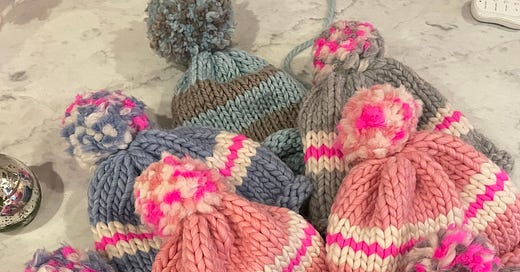
Here is how I think about grief: grief is the experience a human being has when they lose a primary attachment. The way I’m using attachment here comes from the concept of attachment theory that was developed by psychologist John Bowlby and expanded by Mary Ainsworth. It usually refers to the deep enduring bond that connects parents and children and what happens when that bond is disrupted. The theory is useful for understanding how we function inside our most important relationships—between people. But if we allow the idea of attachment to expand broadly, we can play around with a primary attachment as any relationship that significantly contributes to our identity, which is useful because it can help us understand why we feel so shitty when things (ie not people) that define our identity fall apart.
If that is the case, then when we worry about the state of the planet or the government, or our job is at risk, or we have a first world problem like our favorite coffee shop closes, the shittiness we feel is actually a version grief. To me, grief is about all the connections we count on day-to-day and what happens when we lose them (grief) or when we worry about what it will be like if we lose them (anticipatory grief). This being the case, we are all living in some version of grief all the time, which can sound overblown, I realize. And also, climate change is real. And each one of us has an everyday attachment to mother earth that defines our day to day. The disruption of this connection counts as grief in my book. As do a gazillion other big and small disruptions we experience.
So when we meet each other on the street, and you feel bad complaining to me about the fact that you had to cut down the tree in your front yard or that your knee or wrist or pinky finger isn’t healing well from the latest physical insult you’ve dealt with. Just stop with that. What you are dealing with is probably grief. And I get it. You feel weirdly depressed and feel a little dumb about feeling so low and stuck about something so small. Love, don’t do that. I want to hear about it. It makes me feel less alone in my own grief to hear about yours.
Given that we are all in it to some extent or another. I thought I’d share a few things that help me live well-ish with my grief.
Moving: There is a surprising dearth of research on the impact of exercise on grief. Here’s one small study, but I like it because it feels related to my personal experience. During the course of Graham’s ALS I have ridden my peloton, attended a regular exercise class, and walked with friends. Recently I’ve started to learn to hit a golf ball. Doing ANY of these things refreshes my mind and gets me out of the muddy state that grief can create. If I can just get myself on the peloton even for a ten minute ride I know I’ll feel better. Robin Arzon is my guuuurll…anyone else out there ride with Robin? My crown is ON, people.
Handwork: I committed to learning how to knit a hat the Christmas before last. So I knit hats. This is a mostly wintertime activity for me. I am very good at this pattern from purl soho called “happy hat.” I also collage which is mostly an excuse to cut stuff out of magazines and purchase a lot of colored markers. Tombo markers, a good pair of scissors, and double sided tape—and I am transported into a just right level of attention. It’s not just me, there is decent evidence that knitting has mental health benefits. I almost sent my kids to a Waldorf School because of how they think about handwork, but going screen free and refraining from pop culture was a requirement and that was not going to happen at Casa de Graham.
Bad TV and cats: See above rejection of Waldorf School. I call it TV medicine, you might call it too much screen time. Shrinking, White Lotus, Survivor, Master Chef, Slow Horses, Bad Sisters, Derry Girls…plus cats. Need I say more here?
What Went Well journaling: Every night I write down three things that went well that day, what was good about each and why these things happened. This exercise has solid scientific cred. Here is a good description of the practice and list of some of the studies. I do this in a particular refillable journal that Graham brought back for me from Japan, which makes me think in one of my next posts I’ll show you the different journals I keep…not so much to inspire you, but to entertain you. It’s always funny when someone else is letting a little bit of their crazy show.
I would love for other people to share what helps them. It would be so good to have a mighty list of how to stay sane during insane times. Don’t you think?




When I can remember to - it always lifts me up to skip around the house (rather than walk).
Thanks, Cristina. I sew clothes for my grandkids (and occasionally others). It helps me sit beside my grief instead of dance with it. So many good wishes for the launch of About Bliss!